Batik artistry is a fabric dying tradition in Bali. Today we visited a small batik production in Tohpati Village. (I saw three artists.) Batik can be done in several ways: (1) drawing freehand; (2) stamping; or (3) adding and removing layers of wax to allow specific areas of the fabric to accept the dye. The lady in the photo below measures the distance from her previously stamped designs to determine where to place her next stamp.
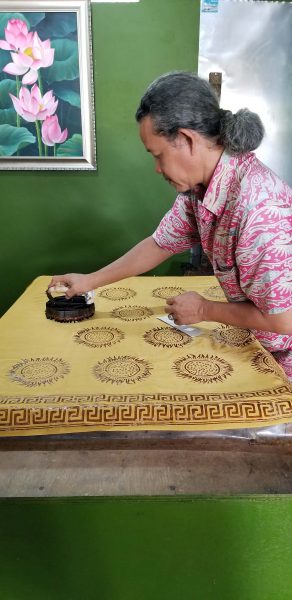
There were many beautiful pieces of batik work available for sale.
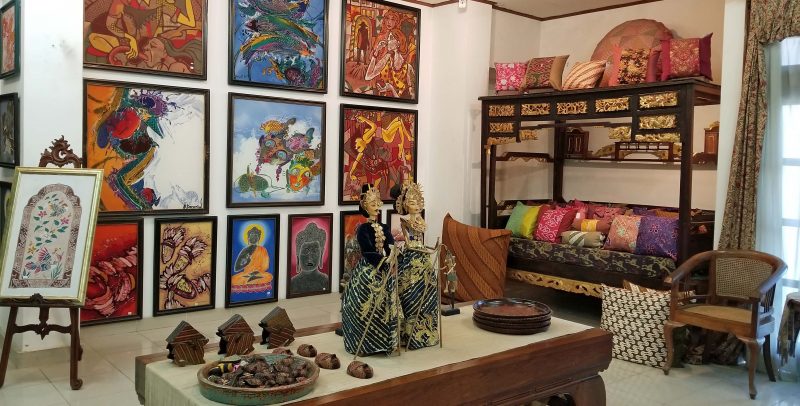
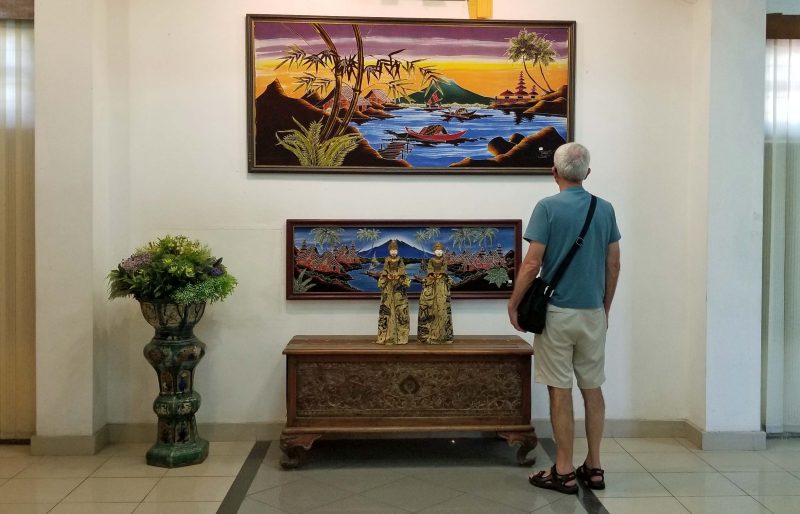
Our next stop was the 17th century Taman Ayun Temple in Mengwi, Bali. Everyone in shorts (most of us–it’s hot and humid) had to put on a sari to enter the temple grounds. We entered the outer courtyard first and saw this representation of a cockfight. Cockfights are popular fund-raisers and the roosters are eventually used as food, so nothing is wasted. The cockfights are sometimes held in auditoriums that seat 3,000 people. At the equivalent of $3 per person per ticket, that’s a pretty decent fund-raiser.

We then moved on to the inner courtyard, where religious rites take place. I wish I could remember more of what our guide told us about the Hindu religious practices. The buildings were interesting. The thatched roofs are made of palm fibers and last about 25 years.
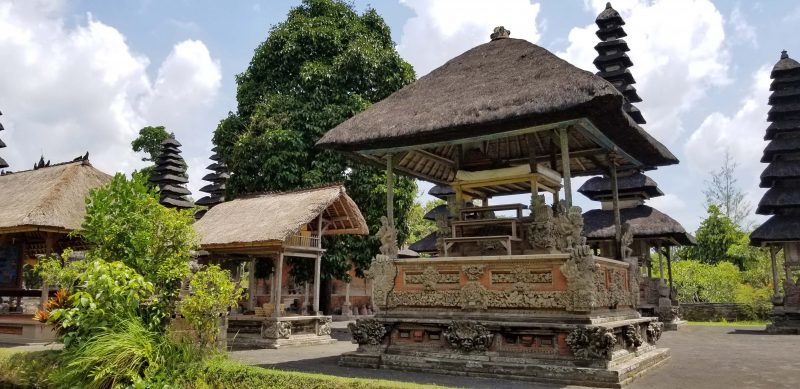
Balinese Hindus eat rice for breakfast, lunch, and dinner. A GMO variety of rice that ripens in only three months is making it possible for Bali to become self-sufficient in growing enough rice to feed its population. Because rice is so important, the people give thanks to the rice goddess, represented by this sculpture at the temple.
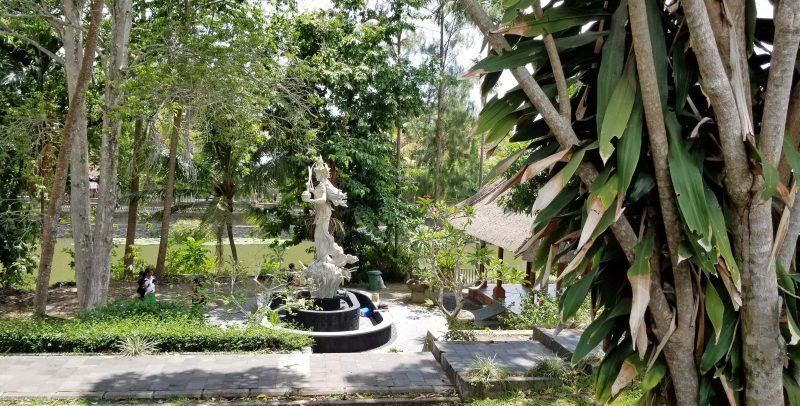
We had traditional Balinese foods for lunch. The only thing that was familiar to me was the Sprite I drank, but the six or seven things I sampled on my plate were all delicious.
Then it was time to go to the 16th century Tanah Lot temple, also called the Sunset Temple. As we approached the temple, we walked through a colorful shopping district and then entered the temple grounds through a split gate. All Hindu temples and many houses have split gates at the entrance. The right side indicates good and the left side represents evil. Together, they bring balance to life.
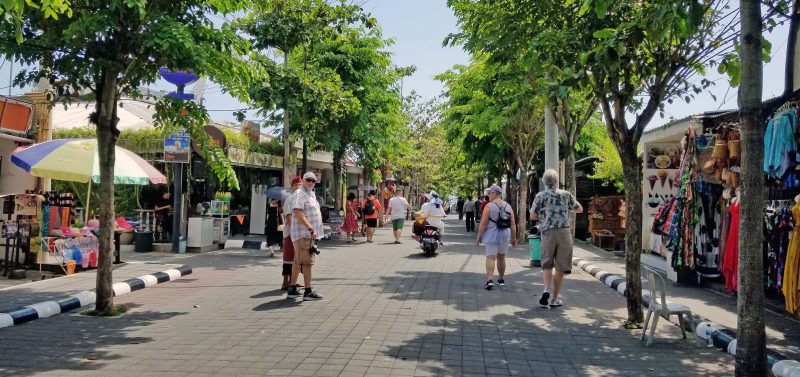

The towers of the Tanah Lot temple are made of black lava and are dramatically built on a narrow rocky promontory that juts into the Indian Ocean. The tide was low while we were there. At high tide, the temple is surrounded by water. It is the most photographed site in Bali. Just beyond the temple is a cove with a striking rock formation.
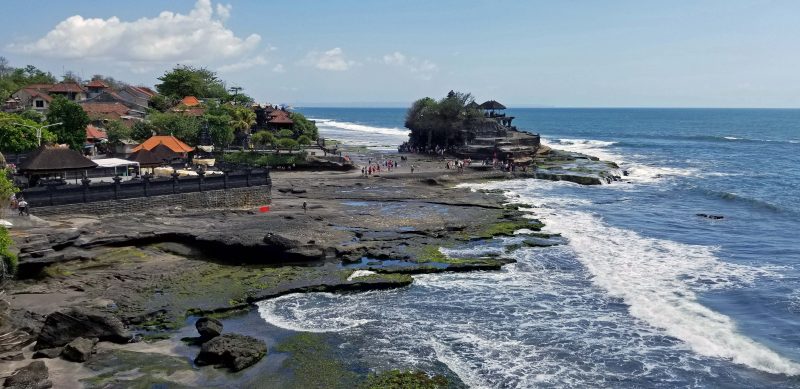

Now, Ted and I have seen the Indian Ocean. Cool! Not only that, but we also saw a tiny gecko. Life is fun.
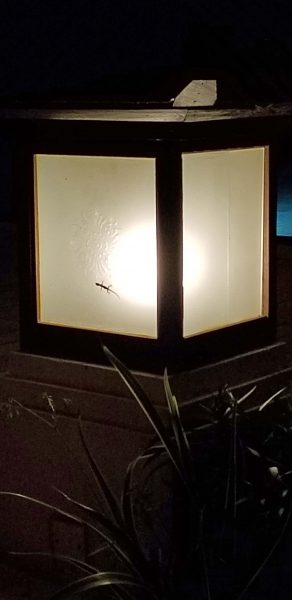
Our tour bus dropped us off at the ship and our cruise begins tomorrow. Internet on the ship will be spotty at sea or slow, so I might not be able to keep up with daily entries of Ted’s and my adventures. Our stateroom has a balcony and a bathroom with a heated floor (we don’t need that in this heat and humidity!), but it’s smaller than a Best Western hotel room. After living onboard for 30 days, our house is going to seem huge!